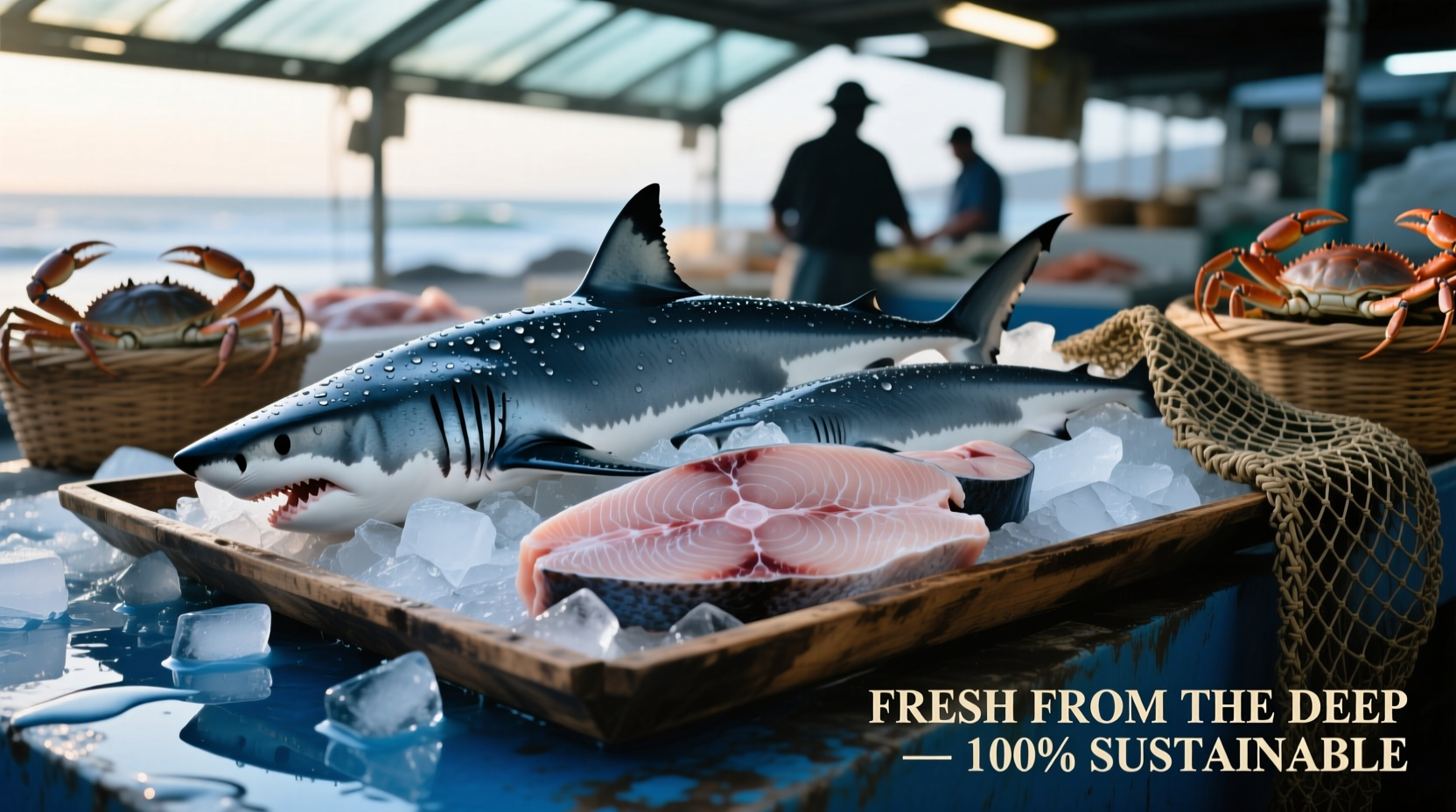Ever wondered what shark tastes like after seeing it on a menu or in a documentary? You're not alone. Many curious food enthusiasts want to know whether shark meat lives up to its mysterious reputation. This guide delivers the straight facts about shark flavor profiles, cultural preparation methods, and important considerations before trying this unique seafood.
Understanding Shark Meat's Unique Flavor Profile
Contrary to popular belief, shark doesn't taste overwhelmingly fishy when properly handled. The flavor varies significantly by species and preparation method. Most culinary experts describe it as having a mild, meaty flavor similar to chicken or alligator, with a firm, dense texture that holds up well to grilling and frying.
The key to palatable shark meat lies in proper preparation. Sharks naturally contain urea in their flesh, which can produce ammonia-like flavors if not addressed. Traditional preparation involves soaking the meat in milk or acidic solutions to neutralize these compounds. When prepared correctly, many tasters note a subtle sweetness and clean finish.
| Seafood Type | Flavor Profile | Texture | Common Preparation Methods |
|---|---|---|---|
| Shark | Mild, slightly sweet, meaty | Firm, dense, steak-like | Soaked, grilled, fried |
| Swordfish | Richer, more pronounced fish flavor | Firm but flakier | Grilled, broiled |
| Tuna | Rich, oily, distinct fish flavor | Soft to firm depending on cut | Raw, seared, grilled |
| Chicken | Neutral, adaptable to seasonings | Tender to firm | Versatile cooking methods |
This comparison shows why shark is often called the "chicken of the sea" in culinary circles—its neutral flavor profile makes it remarkably versatile when properly prepared.
Cultural Context of Shark Consumption Worldwide
Shark consumption varies dramatically across cultures, reflecting both historical practices and modern sustainability concerns. In Iceland, hákarl (fermented shark) is a traditional delicacy dating back to Viking times, though its strong ammonia flavor challenges even experienced palates. Japan has consumed shark for centuries, particularly in the form of sashimi from species like the blue shark.
Australia and New Zealand feature shark regularly on menus, where it's commonly sold as "flake" (typically from gummy shark). In coastal communities across Asia and the Pacific Islands, shark remains an important protein source, with preparation methods refined over generations to optimize flavor and safety.
According to NOAA Fisheries data, shark meat accounts for approximately 1% of global shark and ray landings for human consumption, with significant regional variations. The Food and Agriculture Organization (FAO) reports that shark consumption has declined in many Western countries due to growing awareness of sustainability issues, though it remains culturally significant in numerous traditional fishing communities.

Safety and Sustainability Considerations
Before trying shark, understanding potential health and environmental implications is crucial. Larger shark species tend to accumulate higher mercury levels due to their position at the top of the marine food chain. The FDA recommends limiting consumption of shark (along with swordfish, king mackerel, and tilefish) due to mercury concerns, particularly for pregnant women and young children.
Sustainability presents another significant consideration. According to the International Union for Conservation of Nature (IUCN), approximately one-third of shark and ray species face extinction risk from overfishing. Many conservation organizations recommend avoiding shark consumption altogether or selecting species with healthier population status.
Legal restrictions vary by region. In the United States, the Shark Conservation Act of 2010 prohibits removing shark fins at sea and requires sharks to be brought to port with fins naturally attached. The European Union has implemented similar regulations to combat finning practices.
Preparing Shark for Optimal Flavor
Professional chefs emphasize proper preparation as essential for enjoyable shark consumption. The most critical step involves neutralizing urea compounds through soaking:
- Soaking process: Submerge shark meat in milk or a vinegar-water solution (1:4 ratio) for 4-12 hours
- Cooking temperatures: Cook to medium (145°F internal temperature) to maintain moisture
- Recommended methods: Grilling, pan-searing, or baking work best for shark's dense texture
- Flavor pairings: Citrus, garlic, black pepper, and bold spices complement shark's mild flavor
Chef Hiroshi Nakamura of Tokyo's Sushi Sho explains: "The key to good shark preparation is respecting the traditional methods while adapting to modern palates. Proper soaking transforms the meat from potentially ammonia-tinged to delicately flavorful."
Common Misconceptions About Shark Taste
Several myths persist about shark meat that deserve clarification. The notion that all shark tastes strongly of ammonia stems from improper preparation rather than inherent qualities. When handled correctly, most species offer a clean, mild flavor.
Another misconception suggests shark always has a fishy taste. In reality, shark's flavor profile is significantly milder than many oily fish like mackerel or bluefish. The texture difference is equally important—shark's firm, steak-like consistency sets it apart from flakier fish varieties.
It's also worth noting significant variation between species. Mako shark, prized by chefs, offers a cleaner flavor than some bottom-dwelling species. Understanding these distinctions helps set appropriate expectations when considering shark consumption.
Making Informed Choices About Shark Consumption
Whether you're a curious foodie or considering shark on a menu, understanding both flavor characteristics and broader implications helps make informed decisions. If you choose to try shark, seek establishments that can verify sustainable sourcing and proper preparation techniques.
For those interested in similar flavor profiles without conservation concerns, alternatives like swordfish or firm-fleshed fish such as monkfish provide comparable textures with more sustainable population statuses in many regions.











 浙公网安备
33010002000092号
浙公网安备
33010002000092号 浙B2-20120091-4
浙B2-20120091-4